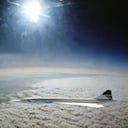How many provinces are in Canada?
There are ten (10) provinces in Canada. They are Alberta, British Columbia, Manitoba, New Brunswick, Newfoundland and Labrador, Nova Scotia, Ontario, Prince Edward Island, Quebec, and Saskatchewan. Also, Canada is made up of three (3) territories, and they are the Northwest Territories, Nunavut, and Yukon.
The provinces and territories of Canada combine to make up the world's second largest country by area.
The major difference between a Canadian province and a territory is that provinces receive their power and authority from the Constitution Act, 1867 (formerly called the British North America Act, 1867). The territorial governments however have powers delegated to them by the federal government.
Also, the provinces are considered to be co-sovereign divisions, and each province has its own "Crown" represented by the lieutenant governor. The territories on the other hand are not sovereign, but simply part of the federal realm; and each has a commissioner who therefore is obligated to represent the federal government.
More Info:
en.wikipedia.org





